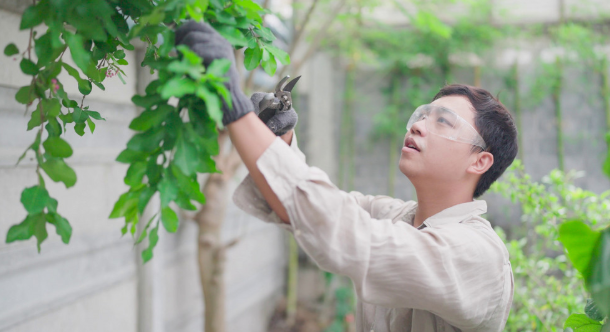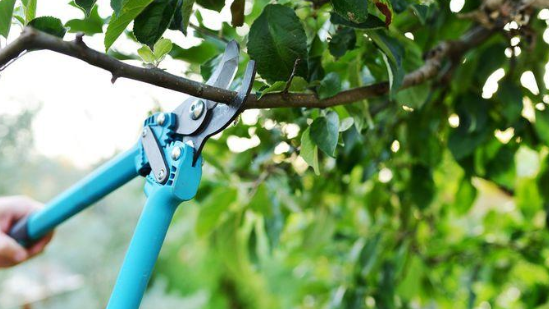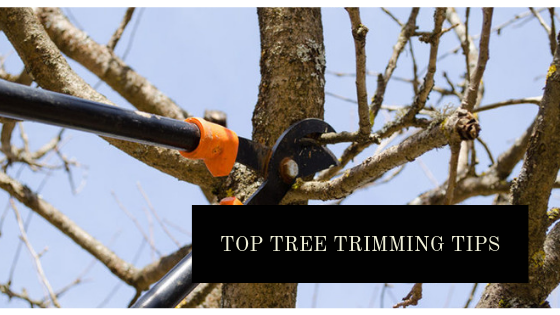Tree trimming is an essential part of creating and maintaining a safe, attractive, and healthy home environment. Whether you have a few ornamental trees or a backyard full of large oaks and maples, regular trimming can make a significant difference in your property’s appearance and safety.
Why Tree Trimming Is Important
Promotes Healthy Growth
Trimming trees helps them grow in a stronger and more balanced way. By removing dead, overcrowded, or weak branches, the tree can direct its energy and nutrients to the healthier parts. This encourages stronger structural development and a more resilient tree. A well-pruned tree is less likely to suffer from limb breakage and more likely to thrive season after season.
Prevents Disease and Pests
Dead or damaged branches can harbor pests and disease, spreading decay throughout the tree and into surrounding vegetation. Regular trimming helps detect and remove these problems early, preventing larger issues. Keeping trees healthy also reduces the risk of having to remove them entirely due to advanced decay or infestation.
Enhances Curb Appeal
Trees that are neatly shaped and free from unsightly dead limbs give your yard a well-maintained, welcoming appearance. They can even boost property value by enhancing the landscape and contributing to the overall aesthetic of your neighborhood.
Best Time to Trim Trees
Seasonal Considerations
Timing is critical when it comes to trimming. The Arbor Day Foundation recommends trimming or pruning trees once per year during their dormant season, which typically occurs in late fall to early spring. This timing varies by species, but trimming during dormancy minimizes stress and promotes faster recovery and growth in the next growing season.
Species-Specific Needs
Different trees respond to pruning at different times. For instance, flowering trees may require trimming right after they bloom, while hardwood trees do best with late winter pruning. Identifying your tree species and understanding its specific needs can improve your trimming results and protect the tree’s long-term health.
Weather Awareness
It’s also important to consider the weather. Avoid trimming during extremely wet or humid conditions, which can increase the risk of disease transmission. Calm, dry days are best for pruning, as they minimize tree stress and reduce the risk of injury or mishap.
Safety Benefits of Tree Trimming
Reduces the Risk of Falling Branches
Overgrown trees with dead or hanging limbs can be hazardous, especially during storms. Trimming eliminates these threats, reducing the risk of falling branches that could harm people, pets, or property. It’s a preventative safety measure that brings peace of mind.
Improves Visibility
Trees growing near sidewalks, driveways, or streets can obstruct sightlines, making it difficult for pedestrians and drivers to see clearly. Trimming keeps these areas visible and safe, enhancing both property functionality and community safety.
Prevents Accidents
Over time, untrimmed trees can become unstable, with large, heavy branches posing serious hazards. Regular maintenance helps prevent accidents and ensures trees remain strong and secure.
Tools and Techniques
Choosing the Right Tools
Basic tools like pruning shears and handsaws are great for small branches, but larger limbs require special care. According to Allstate, any branch larger than four inches in diameter should be handled by a professional arborist to ensure safety and proper technique.
Using Proper Methods
Correct trimming techniques are essential to maintaining tree health. This includes making clean cuts at the right angles and avoiding over-pruning. Improper trimming can harm the tree and even lead to long-term damage, which is why many homeowners turn to professionals for assistance.
Hiring Professional Help
While some yard maintenance tasks are suitable for DIYers, tree trimming often requires expertise. According to Arborists Near Me, 90% of homeowners believe yard maintenance is important, and two out of three homeowners say they would hire a professional tree service to care for their trees. Arborists are trained to assess a tree’s health, use the right tools, and apply the best techniques for safe, effective trimming.
Tree trimming is not just about appearances—it’s about preserving health, ensuring safety, and maintaining value. With expert guidance, the right timing, and proper tools, you can keep your trees thriving year after year. Whether you trim them yourself or call in professionals, caring for your trees is a rewarding part of responsible homeownership.











